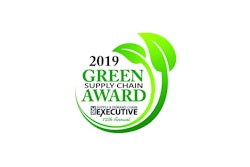
While it’s been 50 years since the first Earth Day was celebrated, today companies and consumers have never been more aware of eco-friendly behavior. With that insight, more companies, especially in the consumer goods industry, are aspiring to meet the criteria of a true circular economy.
In an era where business and lives have been upended by the Coronavirus disease (COVID-19) pandemic, many industries have struggled to remain solvent while others have viewed this as a time to review business strategies and alter areas to ensure future sustainability. Those companies reliant on suppliers are extending that review to the standards and practices of their partners as well.
Elevating sustainable practices
Being more aware of ethical production and delivery of today’s products, consumers are prodding companies to get onboard. In the 2020 CGS Sustainability & Retail Survey, more than one-third of consumers said that during the economic downturn they are continuing to look for sustainable goods when making purchases. And yet, a majority of U.S. (50%) and UK consumers (57%) believe fashion, apparel and footwear brands do not offer enough visibility into their sustainability practices.
Our research found that sustainable goods, including companies’ end-to-end supply chain practices, are of the utmost importance to consumers of all ages, but younger generations are propelling the initiative. Even during the pandemic and subsequent economic downfall, consumers are scrutinizing brands’ practices from sourcing to shipping. More than one-third of consumers said they would stop using a product if they found out that brand didn’t adhere to sustainable or ethical practices.
To better understand the importance, we asked consumers to define what “sustainable practice” means to them. Gaining such insight, can outline for companies how to meet consumer short- and long-term expectations.
The term “sustainability” can mean different things to different people. For consumers, it ranges from initiatives such as brands donating to good causes, having a strong mission or purpose, no testing on animals to ensure ethical practices are followed and whether the company is eco-friendly/reduces waste. For companies, the meaning also includes reducing waste, ensuring ethical sourcing and cutting carbon emissions in a factory and in transporting goods.
Sustainable initiatives – successes and challenges
To prepare for the “New Normal” post-pandemic economy, companies can take steps now to review their practices and partnerships.
Several companies have taken the lead in sustainable practices. Many well-known footwear brands have focused on the importance of developing environmentally friendly products in recent years.
Considering sustainable practices
The cost of producing sustainable goods is something for brands and their suppliers to consider. In a time when budgets are tight and non-essential spending is down, tackling sustainable practices may seem extravagant. Consumers are willing to pay more for sustainable goods, as our survey found, but a continued downward economy may adjust their priorities to physical and emotional safety.
To reach these sustainability-aware customers, current company requirements and where best to get a competitive edge goes beyond traditional expectations of recycling. Rather, it speaks to the broader area of compliance – reducing carbon footprints, lowering the tonnage in landfills and the ethical sourcing of raw materials. It also covers compliance around labor and fair business practices, which are rising to the forefront of consumer requirements.
Companies that don’t adhere to these practices can damage their reputations and risk losing customers and channel partners when, for example, conditions of their factories are questionable or the amount they are paying workers is not a living wage.
To meet requirements, retailers and brands should deploy technology solutions that offer transparency in the supply chain. The technology can provide compliance data and KPIs around where garments are sourced and made, the cost of the labor that went into them, the origin of the fabrics and the route the garment traveled to get to the consumer. These are all data points that more forward-thinking brands are tracking and align with what consumers want.
Tracking sustainable practices
Whether looking to kick off a sustainable initiative or offer transparency into the supply chain, there are established coalitions that can support company efforts, helping with sourcing and reviewing sustainability efforts.
For example, as more apparel brands take up sustainable practices, they’ve increasingly employed the Higg Index, an assessment standard measuring sustainability performance provided by the Sustainable Apparel Coalition. With this, brands have a better understanding of their environmental effects, as well as their partners, within the supply chain.
Similarly, in the UK, Fashion for Good connects brands, producers, retailers, suppliers, non-profit organizations, innovators and funders to work together in their shared ambition to make the fashion industry a force for good. The coalition helps companies establish an accountable framework for social, economic and environmental practices. Fast Forward, a UK- based labor standards improvement program, looks to uncover hidden exploitation and drive collaborative continuous improvement in supply chains.
Product packaging
With consumers of all ages fully embracing e-commerce during the pandemic, they are also scrutinizing how goods are packaged and delivered. CGS research found that nearly 50% of survey respondents consider whether a retailer’s shipping and packaging is eco-friendly when buying online. For purposes of packaging, companies can access eco-friendly standards and best practices from the Sustainable Packaging Coalition.
Other coalitions include the Responsible Packaging Movement started by the brand Prana to ensure products are shipped plastic-free.
The U.S. Cotton Trust Protocol, which sets a standard for more sustainably grown cotton, offers quantifiable and verifiable goals and measurement to responsibly grown cotton production, driving continuous improvement in key sustainability metrics.
Know your supply chain
With all of the effort manufacturers are putting into their sustainable practices, do customers know the details? Consumers want complete transparency into the supply chain; yet, we found that a majority of survey respondents felt brands aren't demonstrating enough visibility into their sustainability practices.
To address that concern, companies should review their third-party suppliers and elect to work with partners that are compliant with sustainability standards, requiring them to adopt technology to ensure a transparent and sustainable supply chain. By implementing planning tools across the supply chain, companies are better able to gain insight into their inventory and align production to sale while reducing the amount of unsold goods.
Although today’s economy has been severely affected by the pandemic, brands must look beyond COVID-19 for the inevitable future rebound and adopt the technology that can play a role in successfully helping them with their sustainable practices. Technology such as product lifecycle management can provide real-time visibility into the supply chain, helping manufacturers remain socially compliant while also increasing productivity and reducing cost.
Sustainability has increasingly risen in consumer importance. Accessing the available tools, companies can evaluate their end-to-end practices for the good of their business, employees and customers, as well as the Earth.



















